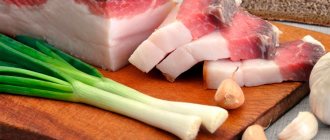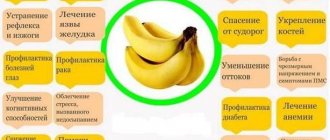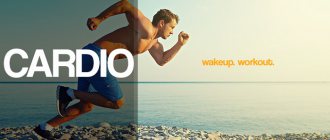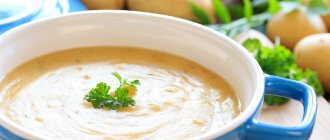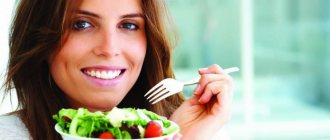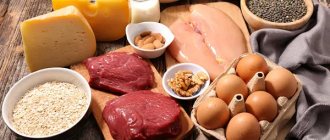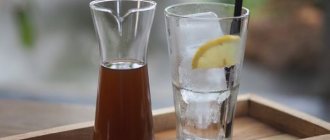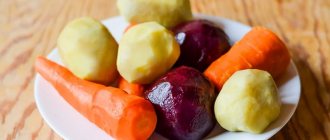Myth 1. There are special diets for “eliminating” fat only from the stomach and thighs.
Not true
I.P.: — There is no diet that can correct certain parts of the body. Solving the problem in the hips and abdomen is possible only with general weight loss. If you want to reduce the size of your waist and hips in relation to the overall proportions of your figure, various cosmetic procedures (SPA, body wraps, manual or machine massage) and physical exercises that affect subcutaneous fatty tissue in a specific area will be effective.
What does one day's nutrition look like?
To avoid confusion, we will give an example of a diet for one day. With this diet, the weight will go away very quickly. Judging by the reviews, the midday diet will allow you to lose up to 3 kg per week. The biggest plummets are the first 5 days, then the scales will not be so pleasing. But then the most interesting thing begins - getting rid of fatty tissue.
Breakfast: any dishes and products.
Lunch: any dishes and products, but without sugar.
Snack: 200 g low-fat cottage cheese.
Dinner: cucumber and tomato salad or 150 g chicken breast.
Myth 2. Before 12, you can eat anything, after 18, you can’t eat anything.
Not true
I.P.: — Recommendations to limit yourself to food after 6 p.m. have no scientific basis. A light dinner is not contraindicated, but the last meal should occur 3-4 hours before bedtime. As for the statement that before 12 you can eat as much as you want, this also does not seem to be true. If you eat simple carbohydrates in large quantities - that is, sweets and starchy foods, for example - I very much doubt that unpleasant consequences can be avoided. And it makes no difference what time you eat it all.
Who is suitable for the “Eat only in the morning” diet?
This is an excellent option for those with a sweet tooth, lovers of fried and flour dishes. But it is important to understand that if you eat high-calorie foods in unlimited quantities, weight loss will not happen quickly. But everything eaten before lunch will burn and will not be deposited on the sides and waist.
The diet may appeal to people who work in the afternoon or study during this time. It is not always possible to have a snack or take a container with you, sometimes you want to save money. But here it is important not to overeat in the evening after work (study).
Also, the diet up to 12 is ideal for early risers. They can eat a hearty meal in the morning and at lunchtime, then go hungry a little, and then it’s time to go to bed.
Myth 3. Even on a diet, you need to have a hearty and regular breakfast.
Is it true
I.P.: - You definitely need to have breakfast! As a rule, for most working people, the next full meal is possible only in the evening, but regular nutrition is necessary to maintain normal digestion, weight and, accordingly, health. The intervals between meals should not exceed 5 hours, since food must not only be received, but also absorbed, providing nutrition to every cell of the body. So, by depriving yourself of breakfast, you are missing out on a rare opportunity to eat properly. What to eat for breakfast? Porridge, fermented milk products, omelettes, and grain bread are suitable.
Pros and cons of the afternoon diet
Every diet has disadvantages. In this case it is difficult to get used to. Most people have dinner late. Sometimes this is the only hearty and complete meal of the day. Problems also arise during festive events, which are usually held in the evening.
But there are many advantages:
- you can lose weight quickly and easily;
- no need to prepare food separately;
- varied diet;
- the diet is balanced, contains products from all groups;
- a person gets used to such nutrition;
- This type of weight loss is not harmful to health.
The main advantage over other diets is that you can indulge in your favorite foods. And they won’t ruin your figure in any way!
Myth 5. To lose weight, you need to use sweeteners.
Not true
I.P.: - There is a sweetener made from plant materials - stevia (honey grass). An extract is extracted from it, which is 200 times sweeter than sugar. Stevia does not increase blood sugar levels, thereby not triggering the release of insulin. Whereas it is the increased level of insulin that contributes to weight gain, and fat is deposited mainly on the abdomen.
However, a healthy person still does not need to consume foods for diabetics (and a sweetener is one of them). To lose weight, I would recommend a balanced diet excluding the consumption of simple carbohydrates: chocolate, cream products, pastries, pies. Also exclude glazed cheese curds, curd mass, baked goods (products made from puff pastry and shortcrust pastry), halva, and ice cream. For those who cannot live without sweets, you can eat dried fruits, honey, sometimes marshmallows, and marshmallows (in reasonable quantities).
Is it possible to eat everything and lose weight?
Diet breakdowns are most often caused by giving up your favorite foods. If a person likes to eat a piece of cake or a chocolate bar, a chop or French fries every day, then he will not be able to refuse them for a long time. In a few days (or weeks) he will break down. Often this is accompanied by stress or joyful events, holidays. Bans also exacerbate the desire to eat your favorite product. As soon as access to food is limited, an uncontrollable desire to eat appears.
The diet is based on this pattern; you can eat any food before noon. At this time, a person allows himself everything, and then the first prohibitions and restrictions come. Sometimes food is completely abandoned. Nutritionists don't support this. It is wiser to choose gentle systems - after lunch a person eats healthy food with a low calorie content. There is a list of allowed products that will not harm your figure.
Myth 6. With age, all women gain weight, nothing can be done about it.
Not true
I.P.: — Women at a certain age really begin to gain weight: during menopause, the production of female hormones decreases, and this contributes to the formation of fat deposits. The threat of hypertension, atherosclerosis, diabetes mellitus, coronary heart disease and other things is also increasing.
However, it is possible to treat the symptoms (and carry out prevention) of menopausal syndrome - and a healthy lifestyle and a balanced diet play an important role in this.
To stay in shape, you need to reduce your fat intake. Eliminate from your diet foods containing “hidden” fats: sausages, glazed cheese curds, curd mass, baked goods, chocolate. Food needs to be baked in the oven, boiled, stewed. Consuming animal products in combination with physical activity helps preserve muscle tissue. Introduce fish into your diet (2-3 times a week). Sea fish oil contains polyunsaturated fatty acids (PUFAs), which help reduce cholesterol fractions in the blood. In addition, fish oil contains vitamin D, which plays a key role in calcium metabolism, and therefore protects against osteoporosis. Seafood is also a source of protein: shrimp, squid, mussels, which contain PUFAs, B vitamins, iron, calcium, iodine. Also in the arsenal of modern medicine there are medications that will help improve your well-being and control your weight; they can be prescribed by a gynecologist-endocrinologist.
Foods that should be excluded from the diet
As mentioned earlier, until twelve o’clock you can deny yourself absolutely nothing. But do not forget that harmful foods should not be eaten even by those who do not even think about losing weight. In addition to extra pounds, they also have a detrimental effect on the condition of the body. So, you should forever exclude from your diet:
Margarine. Not only does it contain solid fat of unknown origin, it is also made from the lowest quality raw materials. The product can have a detrimental effect on the condition of any, even the healthiest organism.- Ready-made breakfast cereals. They are usually made from waste left over from grain processing. Then an exorbitant amount of sugar and dye is added to this raw material. And all this is not at all good for health.
- Semi-finished products. It is not at all clear what they are made of. These foods are often high in sugar and fat. All this contributes to the formation of cholesterol plaques, which results in blockage of blood vessels. Moreover, this food contains a huge amount of flavor enhancers and other substances that are toxic to the body. Therefore, if you want to eat dumplings or pasties, it is better to cook them yourself at home.
- French fries. Buying such a product ready-made or frozen is quite dangerous. Firstly, it is not clear what vegetables were used to prepare the frozen ones, and secondly, it is not known what kind of oil they were fried in. Most often, the damage is not caused by the potatoes themselves, but by the oil, which is not changed for weeks in order to save money. Therefore, if you have a strong desire to eat such potatoes, you should prepare them yourself from raw vegetables.
- Canned food. Everything is quite simple here. They are prepared using preservatives, dyes, large amounts of oil, salt and spices.
Myth 7. Vitamins should only be taken in winter; fresh vegetables and fruits are enough in summer.
Not true
I.P.: - According to statistics from the Institute of Nutrition of the Russian Academy of Medical Sciences, vitamin C deficiency occurs in 100% of the Russian population, deficiency of B vitamins - in 70%, deficiency of beta-carotene (precursor of vitamin A) - in 60%. So everyone needs vitamins, and even more so in order to prepare for vacation and sunbathing.
To receive a sufficient dose of vitamins, a modern person needs to eat properly and take additional vitamin complexes. Beta-carotene, B vitamins, especially PP and B12, help strengthen the protective upper layer of the skin; vegetables and fruits, fish, cottage cheese, buckwheat, almonds, and grain bread are rich in them. Sun rays reduce the amount of vitamin C in the skin, so try to eat currants, citrus fruits, kiwi, bell peppers, herbs, tomatoes, etc. more often.
However, technological progress, unfortunately, has led to an increase in the share of refined and canned food products that have less vitamin value. For example, when making high-grade flour, up to 80-90% of all vitamins are lost, so it is better to eat dark or grain varieties of bread. In general, every adult should take advantage of any available vitamin-mineral complex. The main thing is to focus on meeting the daily needs of the body.
Contraindications
People with problems with the stomach or digestive system are advised to first consult a doctor. This also applies to those who have problems with the pancreas and liver, because a sudden change in diet and eating style can also negatively affect the functioning of these organs. In addition, this diet is not suitable for people whose work involves heavy physical activity, because during the day it is advisable for them to replenish the body with energy, otherwise the body may become exhausted.
Myth 8. Sweets cause acne.
Not true
I.P.: - We are what we eat. The health of our skin largely depends on the state of the digestive organs and the nature of the food consumed. However, don't blame it all on sweets. Typically, people with problem skin are first recommended to eat a diet that is gentle on the gastrointestinal tract. And this means giving up smoked meats, spicy foods, fried foods, meat broths, sausages, pickles, mayonnaise, ketchup, alcohol, coffee, cocoa, carbonated sweet and fizzy drinks. Avoid eating canned and processed foods. It's better to eat a sandwich made with grain bread and butter than a bowl of cereal with sugar and flavorings. It is better to drink green tea with honey or dried fruits than to eat sweet yogurt with a month's expiration date. It's better to make pasta sauce from tomatoes and herbs than to pour ketchup on them. You are recommended to eat natural food, without preservatives. Cook it yourself.
Fully or partially limited products
Products that are not considered healthy foods and, in principle, should not be consumed by anyone are excluded:
- Semi-finished products with various additives (dyes, preservatives, flavor enhancers, sweeteners), fast food, carbonated drinks.
- Margarine, spread, animal fats.
- Canned food, sausages due to the content of preservatives, dyes and unhealthy fats.
- Fatty meats.
- Fried foods.
- Very fatty dairy products.
Limit the consumption of baked goods, dough products (especially industrially produced cakes, cream pies, puff pastry products), confectionery products and salt.
Table of prohibited products
| Proteins, g | Fats, g | Carbohydrates, g | Calories, kcal | |
Vegetables and greens | ||||
| radish | 1,2 | 0,1 | 3,4 | 19 |
| white radish | 1,4 | 0,0 | 4,1 | 21 |
| red radish | 1,2 | 0,1 | 3,4 | 20 |
| black radish | 1,9 | 0,2 | 6,7 | 35 |
| spinach | 2,9 | 0,3 | 2,0 | 22 |
| sorrel | 1,5 | 0,3 | 2,9 | 19 |
Fruits | ||||
| bananas | 1,5 | 0,2 | 21,8 | 95 |
Berries | ||||
| grape | 0,6 | 0,2 | 16,8 | 65 |
Mushrooms | ||||
| mushrooms | 3,5 | 2,0 | 2,5 | 30 |
Nuts and dried fruits | ||||
| raisin | 2,9 | 0,6 | 66,0 | 264 |
Cereals and porridges | ||||
| semolina | 10,3 | 1,0 | 73,3 | 328 |
| white rice | 6,7 | 0,7 | 78,9 | 344 |
Flour and pasta | ||||
| pasta | 10,4 | 1,1 | 69,7 | 337 |
Confectionery | ||||
| jam | 0,3 | 0,2 | 63,0 | 263 |
| jam | 0,3 | 0,1 | 56,0 | 238 |
| candies | 4,3 | 19,8 | 67,5 | 453 |
| pastry cream | 0,2 | 26,0 | 16,5 | 300 |
| cookie | 7,5 | 11,8 | 74,9 | 417 |
Ice cream | ||||
| ice cream | 3,7 | 6,9 | 22,1 | 189 |
Cakes | ||||
| cake | 4,4 | 23,4 | 45,2 | 407 |
Chocolate | ||||
| chocolate | 5,4 | 35,3 | 56,5 | 544 |
Raw materials and seasonings | ||||
| mustard | 5,7 | 6,4 | 22,0 | 162 |
| mayonnaise | 2,4 | 67,0 | 3,9 | 627 |
Dairy | ||||
| milk 3.6% | 2,8 | 3,6 | 4,7 | 62 |
| milk 4.5% | 3,1 | 4,5 | 4,7 | 72 |
| cream | 2,8 | 20,0 | 3,7 | 205 |
| sour cream 25% (classic) | 2,6 | 25,0 | 2,5 | 248 |
Cheeses and cottage cheese | ||||
| cheese | 24,1 | 29,5 | 0,3 | 363 |
| cottage cheese 11% | 16,0 | 11,0 | 1,0 | 170 |
| cottage cheese 18% (fat) | 14,0 | 18,0 | 2,8 | 232 |
Meat products | ||||
| pork | 16,0 | 21,6 | 0,0 | 259 |
| pork liver | 18,8 | 3,6 | 0,0 | 108 |
| pork kidneys | 13,0 | 3,1 | 0,0 | 80 |
| pork fat | 1,4 | 92,8 | 0,0 | 841 |
| salo | 2,4 | 89,0 | 0,0 | 797 |
| beef liver | 17,4 | 3,1 | 0,0 | 98 |
| beef kidneys | 12,5 | 1,8 | 0,0 | 66 |
| beef brains | 9,5 | 9,5 | 0,0 | 124 |
Sausages | ||||
| smoked sausage | 16,2 | 44,6 | 0,0 | 466 |
| smoked sausage | 9,9 | 63,2 | 0,3 | 608 |
| sausages | 10,1 | 31,6 | 1,9 | 332 |
| sausages | 12,3 | 25,3 | 0,0 | 277 |
Bird | ||||
| smoked chicken | 27,5 | 8,2 | 0,0 | 184 |
| duck | 16,5 | 61,2 | 0,0 | 346 |
| smoked duck | 19,0 | 28,4 | 0,0 | 337 |
| goose | 16,1 | 33,3 | 0,0 | 364 |
Fish and seafood | ||||
| smoked fish | 26,8 | 9,9 | 0,0 | 196 |
| salted fish | 19,2 | 2,0 | 0,0 | 190 |
| Red caviar | 32,0 | 15,0 | 0,0 | 263 |
| black caviar | 28,0 | 9,7 | 0,0 | 203 |
| canned fish | 17,5 | 2,0 | 0,0 | 88 |
| cod (liver in oil) | 4,2 | 65,7 | 1,2 | 613 |
Oils and fats | ||||
| animal fat | 0,0 | 99,7 | 0,0 | 897 |
| cooking fat | 0,0 | 99,7 | 0,0 | 897 |
Non-alcoholic drinks | ||||
| instant coffee dry | 15,0 | 3,5 | 0,0 | 94 |
| * data is per 100 g of product | ||||
Myth 9. Pregnant women should eat whatever they want.
Not true
I.P.: — Nutrition in the first months of pregnancy should be balanced in proteins, fats, carbohydrates and calorie intake. Because the child receives everything necessary for growth from the mother’s blood. Animal proteins must be consumed: through meat and low-fat fish, dairy products, eggs. This is approximately 100 - 150 g of veal or beef, or 150 g of cod, pike perch, sea bass, hake. Low-fat cottage cheese - 100 g, cheese - 50 g, fermented milk drink - 200 g. It is enough to eat no more than 2 - 3 eggs per week. The remaining proteins (vegetable) will come from eating vegetables, fruits, legumes, and cereals. For example: crumbly buckwheat porridge - 200 g, vegetables - 100 g, fruits - 300 g.
The amount of fat during this period is 80 g. It is enough to consume 25 - 30 g of unrefined vegetable oil per day. If you are prone to obesity, then you even need to reduce your fat intake per day.
But a pregnant woman’s need for carbohydrates increases - up to 400 g per day. Just keep in mind that if you are obese and prone to it, the amount of carbohydrates should be gained from wholemeal bread, grain products, and not sweets. It is advisable to include rosehip decoction in your diet and use multivitamins for pregnant women as prescribed by your doctor. Milk and dairy products are the main suppliers of calcium. Natural pink salmon, mackerel, cod liver, dried mushrooms, and green peas are rich in phosphorus. Plant products are rich in magnesium, especially seaweed, watermelon, wheat bran, apricots, oatmeal, beans, millet, peas, buckwheat and pearl barley, mackerel, squid, eggs. By including these products in your diet (egg - 1 piece, wholemeal bread - 100 g, oatmeal with milk, 50 g of cereal + 150 g of milk, 100 g of watermelon), you will provide the daily requirement for magnesium for a pregnant woman (450 mg) .
And be sure to take daily walks of 40 minutes to 1 hour. If you are prone to weight gain, 1 fasting day per week (meat or fish) is also recommended.
What to eat at noon, or proper lunch
It is important to start and finish lunch before 12 o'clock. After all, we have a midday diet. Unlike breakfast, it is better not to eat sweets or baked goods for lunch. These foods will provoke insulin spikes. As a result, within a couple of hours a strong feeling of hunger will appear, with which it is very difficult to endure until the evening.
What to eat for lunch:
- soups. They can be in vegetable, fish, or meat broths. Any additives are allowed, including cereals;
- stew, stewed, baked vegetables. Can be combined with meat and fish products. Pasta and cereals are not prohibited;
- proteins. This is meat, fish, poultry, you can afford ham, sausages, jellied meat or aspic. Proteins fill you up for a long time;
- the right fats. These are unrefined oils and nuts.
At lunchtime you can also enjoy any of your favorite dishes. It is important not to snack on sweets and give up desserts. They will slow down weight loss.
Myth 10. If you have gastritis, you absolutely cannot lose weight.
Not true
I.P.: — If you eat right, you can successfully control your weight even with chronic gastritis. Here are some recommendations for those who want to lose weight, but are afraid of harming their stomach:
1. Eat no more than 400-500 g of food at a time, try to eat at the same time every day.
2. It is important to eat small meals at least 4 times a day. The last meal is advisable three hours before bedtime.
3. Eat slowly, chewing each bite for at least 25 seconds. This way the stomach receives mushy food processed by saliva, which is easy for it to digest. Plus, when you chew your food thoroughly, the central nervous system receives information about the composition of the food and gives commands to the secretory parts of the stomach to produce the appropriate enzymes in the right quantities.
By the way, this rule is also very useful for those who want to lose weight: you feel full much faster, so you eat less and don’t gain weight.
4. To quickly restore stomach function, your diet should contain a sufficient amount of protein (meat, poultry, fish, eggs, dairy products).
5. From your diet, exclude foods that linger in the stomach for a long time and stimulate the secretion of hydrochloric acid. These are meat broths, stringy meat, sausages, smoked fish, pickles, fried foods, saturated fats (beef, lamb, lard), margarine, rye bread, canned food, mayonnaise, ketchup, vegetables that cause bloating (white cabbage, legumes, onions), alcohol, natural coffee, tea, cocoa, carbonated, sweet and fizzy drinks, chips.
Authorized Products
As mentioned above, the “you can eat everything before 12” diet for breakfast can include any foods, even not very healthy ones. However, it is preferable that breakfast and lunch contain products that belong to a healthy diet, which over time should become the main one in your life:
- Stewed, boiled or raw vegetables: potatoes, all types of cabbage, peas and other legumes, corn, asparagus, green beans, tomatoes, mushrooms, cucumbers, bell peppers are allowed. Canned and salted vegetables are limited.
- Raw fruits. Mainly citrus fruits, pineapples, apples, kiwis, pears, watermelons. Bananas, grapes, figs, and persimmons are limited. A fifth of the diet consists of fresh fruits and vegetables.
- Berries in any quantity.
- Lean meat, boiled or baked. Optionally, boiled sausage or low-fat sausages.
- Boiled and stewed fish, seafood.
- Eggs (boiled or scrambled).
- Porridge on the water.
- Polyunsaturated fats from vegetable oils (olive, flaxseed), fatty fish, seeds and nuts.
- Any low-fat fermented milk products (cottage cheese, kefir, fermented baked milk, sour cream, yogurt).
- Fruit and vegetable juices, tea (black, herbal, green), compote (without sugar), coffee and cocoa.
- Crispbread, muesli, granola, bran.
Preferred for dinner:
- Boiled and stewed fish, seafood.
- Lean boiled meat.
- Eggs (boiled or scrambled).
- Stewed, boiled or raw vegetables, excluding starchy ones (potatoes, legumes and corn). All types of cabbage, asparagus, green beans, tomatoes, cucumbers, and bell peppers are preferred.
- Berries in any quantity.
- Unsweetened fruits.
- Low-fat dairy products (cottage cheese, kefir, fermented baked milk, sour cream, yogurt).
- Salt is limited.
Table of permitted products
| Proteins, g | Fats, g | Carbohydrates, g | Calories, kcal | |
Vegetables and greens | ||||
| greenery | 2,6 | 0,4 | 5,2 | 36 |
| eggplant | 1,2 | 0,1 | 4,5 | 24 |
| beans | 6,0 | 0,1 | 8,5 | 57 |
| zucchini | 0,6 | 0,3 | 4,6 | 24 |
| cabbage | 1,8 | 0,1 | 4,7 | 27 |
| broccoli | 3,0 | 0,4 | 5,2 | 28 |
| boiled cauliflower | 1,8 | 0,3 | 4,0 | 29 |
| bulb onions | 1,4 | 0,0 | 10,4 | 41 |
| carrot | 1,3 | 0,1 | 6,9 | 32 |
| cucumbers | 0,8 | 0,1 | 2,8 | 15 |
| salad pepper | 1,3 | 0,0 | 5,3 | 27 |
| salad | 1,2 | 0,3 | 1,3 | 12 |
| beet | 1,5 | 0,1 | 8,8 | 40 |
| celery | 0,9 | 0,1 | 2,1 | 12 |
| soybeans | 34,9 | 17,3 | 17,3 | 381 |
| asparagus | 1,9 | 0,1 | 3,1 | 20 |
| tomatoes | 0,6 | 0,2 | 4,2 | 20 |
| Jerusalem artichoke | 2,1 | 0,1 | 12,8 | 61 |
| pumpkin | 1,3 | 0,3 | 7,7 | 28 |
| beans | 7,8 | 0,5 | 21,5 | 123 |
| garlic | 6,5 | 0,5 | 29,9 | 143 |
| lentils | 24,0 | 1,5 | 42,7 | 284 |
Fruits | ||||
| avocado | 2,0 | 20,0 | 7,4 | 208 |
| oranges | 0,9 | 0,2 | 8,1 | 36 |
| pomegranate | 0,9 | 0,0 | 13,9 | 52 |
| grapefruit | 0,7 | 0,2 | 6,5 | 29 |
| pears | 0,4 | 0,3 | 10,9 | 42 |
| kiwi | 1,0 | 0,6 | 10,3 | 48 |
| lemons | 0,9 | 0,1 | 3,0 | 16 |
| mango | 0,5 | 0,3 | 11,5 | 67 |
| tangerines | 0,8 | 0,2 | 7,5 | 33 |
| nectarine | 0,9 | 0,2 | 11,8 | 48 |
| peaches | 0,9 | 0,1 | 11,3 | 46 |
| apples | 0,4 | 0,4 | 9,8 | 47 |
Berries | ||||
| gooseberry | 0,7 | 0,2 | 12,0 | 43 |
| Red currants | 0,6 | 0,2 | 7,7 | 43 |
| black currant | 1,0 | 0,4 | 7,3 | 44 |
Nuts and dried fruits | ||||
| nuts | 15,0 | 40,0 | 20,0 | 500 |
| cashew | 25,7 | 54,1 | 13,2 | 643 |
| sesame | 19,4 | 48,7 | 12,2 | 565 |
| flax seeds | 18,3 | 42,2 | 28,9 | 534 |
| fenugreek seeds | 23,0 | 6,4 | 58,3 | 323 |
| sunflower seeds | 20,7 | 52,9 | 3,4 | 578 |
Cereals and porridges | ||||
| buckwheat (kernel) | 12,6 | 3,3 | 62,1 | 313 |
| oat groats | 12,3 | 6,1 | 59,5 | 342 |
| cereals | 11,9 | 7,2 | 69,3 | 366 |
| millet cereal | 11,5 | 3,3 | 69,3 | 348 |
Raw materials and seasonings | ||||
| honey | 0,8 | 0,0 | 81,5 | 329 |
Dairy | ||||
| skim milk | 2,0 | 0,1 | 4,8 | 31 |
| natural yogurt 2% | 4,3 | 2,0 | 6,2 | 60 |
Cheeses and cottage cheese | ||||
| cottage cheese 0.6% (low fat) | 18,0 | 0,6 | 1,8 | 88 |
| curd tofu | 8,1 | 4,2 | 0,6 | 73 |
Meat products | ||||
| beef | 18,9 | 19,4 | 0,0 | 187 |
| rabbit | 21,0 | 8,0 | 0,0 | 156 |
Bird | ||||
| chicken fillet | 23,1 | 1,2 | 0,0 | 110 |
| turkey | 19,2 | 0,7 | 0,0 | 84 |
Fish and seafood | ||||
| fish | 18,5 | 4,9 | 0,0 | 136 |
| squid | 21,2 | 2,8 | 2,0 | 122 |
| mussels | 9,1 | 1,5 | 0,0 | 50 |
| seaweed | 0,8 | 5,1 | 0,0 | 49 |
Oils and fats | ||||
| butter | 0,5 | 82,5 | 0,8 | 748 |
| linseed oil | 0,0 | 99,8 | 0,0 | 898 |
| olive oil | 0,0 | 99,8 | 0,0 | 898 |
| sunflower oil | 0,0 | 99,9 | 0,0 | 899 |
Non-alcoholic drinks | ||||
| mineral water | 0,0 | 0,0 | 0,0 | — |
| green tea | 0,0 | 0,0 | 0,0 | — |
| * data is per 100 g of product | ||||
Before pregnancy, I easily went without eating until noon for several years. At noon, I could drink freshly squeezed juice, a smoothie, or snack on seasonal fruit, and the first full meal in the form of porridge and salad was usually after 12:00 noon. Cleansing and restoring the body, feeling light and energetic throughout the day, strengthening the immune system and getting rid of many health problems - the benefits of intermittent fasting and long breaks between meals are now being talked about more and more often. How it works? What intervals between meals will be beneficial? Why do more and more experts recommend against frequent snacking throughout the day? And who is this system not suitable for? The opinion of experts on intermittent fasting is in this post.
Material prepared by: Daria Bukhman
What is intermittent fasting?
The concept of “intermittent fasting,” which is often used by Russian experts, does not fully reflect the essence of the Western approach and does not sound entirely clear. A more accurate translation, which in itself explains the essence of the practice, would be “short-term refusal to eat.” Unlike traditional fasting, intermittent fasting involves significantly shorter periods of time without food, but the practice is repeated at regular intervals every day or every week.
How did our ancestors eat?
Many modern diets and health trends take cues from the eating styles of our ancestors. And the principle of intermittent fasting is no exception. In the times of hunter-gatherers (namely, since the late Paleolithic, according to scientists, our DNA has remained almost unchanged), hunger was the norm, because no one knew when they would be able to catch the next game or find plant food. Thanks to this alternation of moments of eating with periods of fasting, the human body has learned, firstly, to effectively break down fat (and not glucose) for energy, entering a state of ketosis-carbohydrate starvation of cells. And secondly, it became more adaptive and able to switch between burning glucose and burning fat as fuel. It is this ability that we do not train at all, eating every three hours, and sometimes more often (after all, no one canceled snacks :).
Why is this necessary?
Recently, more and more scientific studies have appeared on the benefits of this practice. Intermittent fasting promises to reduce inflammation in the body, regulate blood sugar levels, improve mental function, increase energy levels, and may also prolong life, prevent and help fight cancer, diabetes and cardiovascular disease at the level of cell repair in the body.
Experts' opinion
“It’s hard to imagine our ancestors crawling out of caves and asking, “What’s for breakfast today?” In those days there were no refrigerators, there was nowhere to store food. For me, intermittent fasting is a kind of reunion with our ancestors,” Dr. Stephen Gundry, cardiologist, author of The Plant Paradox.
“Have you ever noticed that when you are sick, you have no appetite at all? This is an absolutely normal reaction of the body. Your body itself tries to lower blood glucose levels to fight infection. Intermittent fasting is more than just a fad; fasting is hardwired into our DNA,” Dr. Jason Fung, fasting physician and author of The Complete Guide to Fasting.
“I myself use the technique of intermittent fasting every week and highly recommend it to my patients. It’s amazing how simply cutting out food can significantly reduce inflammatory markers in the body,” Dr. William Cole, functional medicine practitioner.
“Over my many years of practice, I have witnessed how fasting has healed patients from arthritis and lupus, helped cope with eczema and psoriasis, and quickly stopped the development of cardiovascular diseases. At the same time, the healing is complete, without a rollback, and in many cases operations were recommended that were not ultimately necessary,” - Dr. Joel Fuhrman, a practicing family physician, nutritionist, author of the book Fasting and Eating for Health.
“Intermittent fasting is a very fashionable philosophy right now, which, among other things, has helped debunk the myth that eating small frequent meals throughout the day improves metabolism (for which I am grateful). I would like to draw your attention to three points: listen to your body and do not harm yourself. If you feel that fasting is not for you, then you should not torture yourself. Second, fasting in any form is dangerous for people (especially women) with eating disorders such as anorexia and bulimia. Thirdly, the method of intermittent fasting does not take into account the thousand-year experience of Ayurveda, which suggests that some types of people tolerate fasting easier, while others are much more difficult. That’s why I prefer a well-structured detox program to intermittent fasting,” - Kimberly Snyder, nutritionist, author of the best-selling book The Beauty Detox Solution.
“Just as we need sleep to reset and repair, our digestive system needs to go without food for a period of time. I love incorporating intermittent fasting into my practice to combat inflammation and strengthen the immune system,” Dr. Amy Sha, Certified Digestive Health Specialist.
“I am often asked if women can fast. Prolonged fasting, without a doubt, can shut down the reproductive system in women, but short-term fasting can rejuvenate a woman, increase energy levels, improve intestinal microflora,” Felice Gersh, a board-certified gynecologist, founder of Integrative Medical Group of Irvine in California.
Several hours to several days - types of intermittent fasting
There are many types of intermittent fasting, but perhaps the most popular practices are:
Method 16/8
This type of fasting involves 16 hours without food for men and 14-15 hours for women every day. So you're trying to fit your meals into an 8-10 hour window (usually 2-3 meals). For example, if you have dinner at 6:00 pm, you have breakfast at 9:00-10:00 am the next day, thus fasting for 15-16 hours (most of which, hopefully, you sleep).
Method 5:2
This type of fasting involves eating normally 5 days a week and cutting calories to 500-600 on the remaining two days. This subgroup includes detox programs with daily calorie restriction.
Alternate day fasting method
Method 12–6
In fact, we skip breakfast, have dinner at 18.00, and break the fast with lunch at 12.00.
Warrior Diet
The only meal during the day is dinner, that is, fasting can last up to 22 hours (from dinner to dinner). You can read more about the system and selected quotes from the book “The Warrior Diet” in this post.
★ It is important to remember that the first meal after a break should be nutritious, filling and healthy, otherwise all the work your body does to detoxify during intermittent fasting actually becomes meaningless. A great option would be a smoothie with healthy vegetable fats, kitchari, fresh vegetable juice, salad and omelet.
Ayurveda and intermittent fasting
According to Ayurveda, a 12-hour break between dinner and breakfast is extremely beneficial for health, however, a longer fast will not benefit all doshas.
It is believed that fasting is not suitable for people with predominant vata dosha. If they still decide to try, then it is better to experiment in the warm season. Pitta people find it extremely difficult to fast due to their good appetite and strong agni. Kapha is the dosha for which fasting is most beneficial and easy to perform due to its slow metabolism. This category of people is usually not hungry in the morning and can easily skip breakfast.
Who is not suitable for intermittent fasting?
If you have gallbladder problems
During fasting, the gallbladder does not release bile, which is secreted by the liver. Therefore, during fasting, bile becomes very concentrated and, at the moment of breaking fast (during the first meal), it can release small stones that can clog the duct.
If you have had or have an eating disorder
Intermittent fasting can seriously aggravate illnesses such as bulimia, anorexia, or other forms of eating disorders.
If you have adrenal insufficiency or adrenal fatigue
Fasting can increase the concentration of cortisol, a stress hormone, in the blood, causing the adrenal glands to work even harder.
If you are pregnant or breastfeeding
★ Intermittent fasting can be a fun experiment and can bring significant benefits, but only if your body is ready for it.
Remember that we are bio-individuals - what works great for some people may not work for others. NutritionUseful tips
